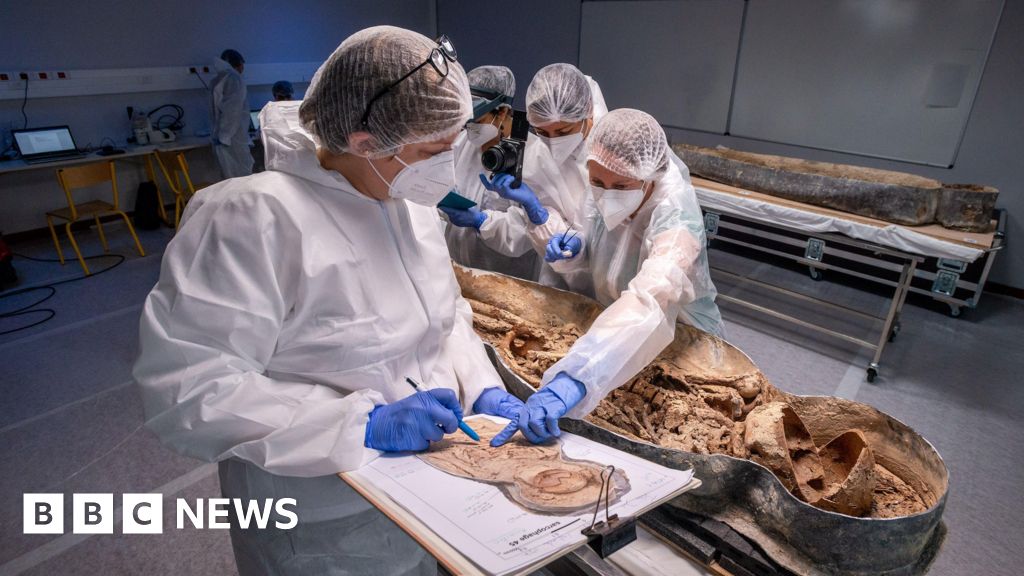
The tomb of one of France’s best-loved early poets has been discovered during post-fire restoration work in Notre-Dame cathedral.
Scientists say they are nearly certain a lead coffin found beneath the transept is that of Joachim du Bellay, who died in Paris in 1560 at the age of about 37.
The 2019 fire, which destroyed Notre-Dame’s roof and spire, has provided a rare opportunity for archaeologists. Their findings will be on display at an exhibition from November, shortly before the cathedral’s re-opening.
Born near Angers in western France around 1522, du Bellay was – with Pierre de Ronsard – founder of a circle of poets known as La Pleiade which championed French, rather than Latin, as a language of poetry.
It was known from records that du Bellay was buried in Notre-Dame, where he had served as a minor clerical official. But his tomb has never been found.
Analysis of the skeleton inside the lead coffin revealed it to be of a man aged about 35, who suffered from bone tuberculosis in his neck and head, and spent a lot of time in the saddle.
Du Bellay suffered in later years from deafness and debilitating headaches – symptoms consistent with the researchers’ findings. It is also known he was a regular rider, having notably made the journey from Paris to Rome on horse.
One remaining question is why the body was where it was, and not in the side-chapel where it was recorded as being interred.
One theory is that it was moved to the new site after his name became famous with publication of his collected works some years after he died.
Du Bellay is still taught in French schools, and a few of his poems are widely-known.
The most famous Heureux qui comme Ulysse (Happy he who like Ulysses) is about nostalgia for one’s childhood home.



